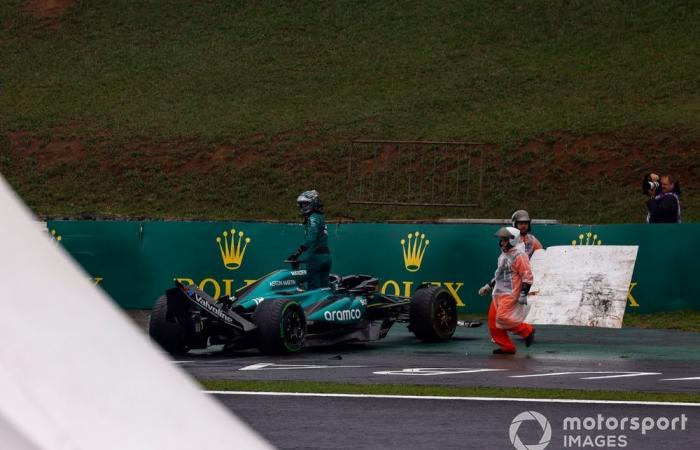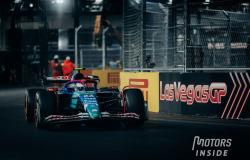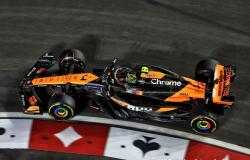The FIA has explained the 40-second red flag delay after Lance Stroll’s crash in Formula 1 Brazilian Grand Prix qualifying that Red Bull feels cost Max Verstappen a shot at avoiding Q2 elimination.
Stroll tagged the barriers after spinning off at Turn 3 in the second qualifying segment, bringing out the yellow flag with 1m37s left on the clock.
Verstappen was one of the first cars on the scene of Stroll’s crash, seeing his lap ruined by the double-waved yellow, which left him on the bubble in 10th.
Less than two seconds after the yellow flag, Ferrari’s Charles Leclerc improved his lap time to dump Verstappen out, with the Red Bull driver eventually bumped down to 12th, which will become 17th on the grid after his five-place engine change penalty.
Eventually the double-waved yellows turned into a red flag after a 40-second wait, which incensed Red Bull as it felt an immediate red flag would have allowed Verstappen enough time for one more run.
Red Bull was particularly furious because in Q3 the red flag did come out swiftly for crashes by Fernando Alonso and Alex Albon.
“I don’t understand why it took so long for the red flag to come out, it is obviously a big accident,” Horner told Sky Sports F1.
Christian Horner, Team Principal Red Bull Racing
Photo by: Red Bull Content Pool
“Turn 3 and one of the most dangerous corners on the circuit. It took 40 seconds to throw the red flag and it’s the second day in a row now that we’ve had very late calls, whether it was a VSC yesterday or the red flag today, the other red flags were all instantaneous.
“All you’ve got to do is focus on the safety. It’s not about letting cars finish laps. Stroll was not trying to get that car going again. It was screwed.”
Motorsport.com has learned that FIA race control didn’t decide to wait with the red flag to let other drivers finish their laps, but because it could see on Stroll’s onboards that the Canadian was still trying to bring his car back to the pitlane.
The lengthy qualifying session and the short turnaround time to the race at 12:30 local time meant it was crucial – and potentially race saving – for drivers to make it back to the pits after an incident so the teams can repair the cars.
For example, after his early shunt Franco Colapinto’s Williams was stuck behind the barrier for over 90 minutes until the end of qualifying, before Williams could even begin to assess the damage.
Stroll was therefore instructed by his race engineer to try and bring his Aston back if possible, being told that his engine and temperatures were still good to go.
Only after it was obvious to race control that the Canadian wasn’t able to get going, due to crippling suspension damage, it decided to issue a red flag. Even after the red flag Aston still hoped Stroll could get his vehicle back to the pitlane, before he was told to shut it down.
Lance Stroll, Aston Martin AMR24, after crashing out of Qualifying
Photo by: Andrew Ferraro / Motorsport Images
While Stroll was stationary in the run-off area on the exit of a corner where several other drivers had spun or crashed, the FIA was satisfied to stay under double-waved yellow flag conditions until then because it effectively acted as a local red flag, with drivers required to slow down and be prepared to stop on the scene of the accident, with their lap times ruined anyway.
In the case of Alonso and Albon, the pair suffered a much heavier crash that brought out the medical car, so it was immediately obvious to race control that their cars were going no further and a swift red flag was warranted.
Starting from 17th, Verstappen has a big challenge on his hands to limit the damage compared to championship rival Lando Norris, who took pole in his McLaren ahead of Mercedes’ George Russell.
Verstappen leads Norris by 44 points after the Briton won Saturday’s sprint race, with the world champion fourth, having finished third on the road but was given a five-second time penalty for a virtual safety car infringement which dropped him behind Leclerc.







